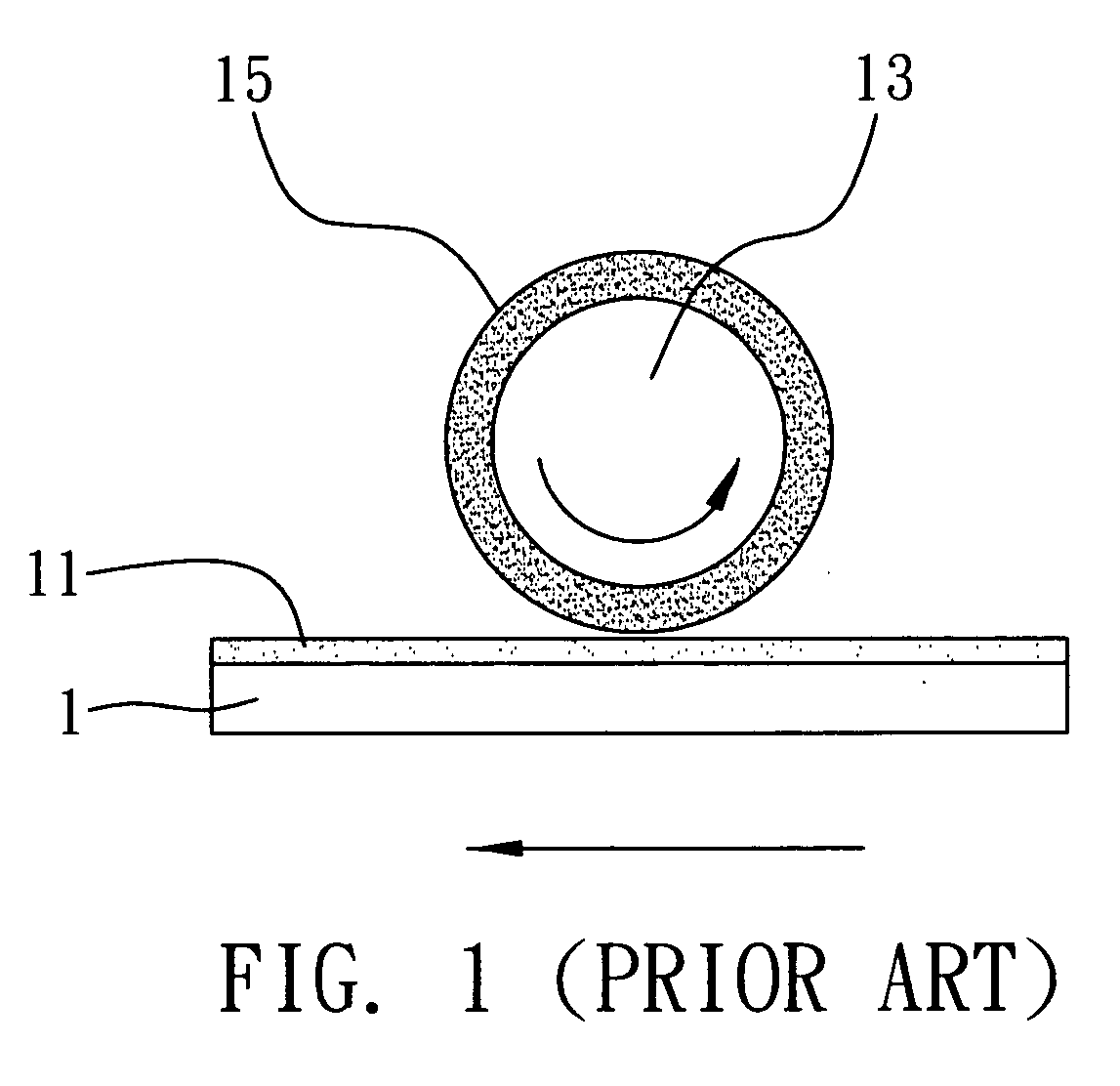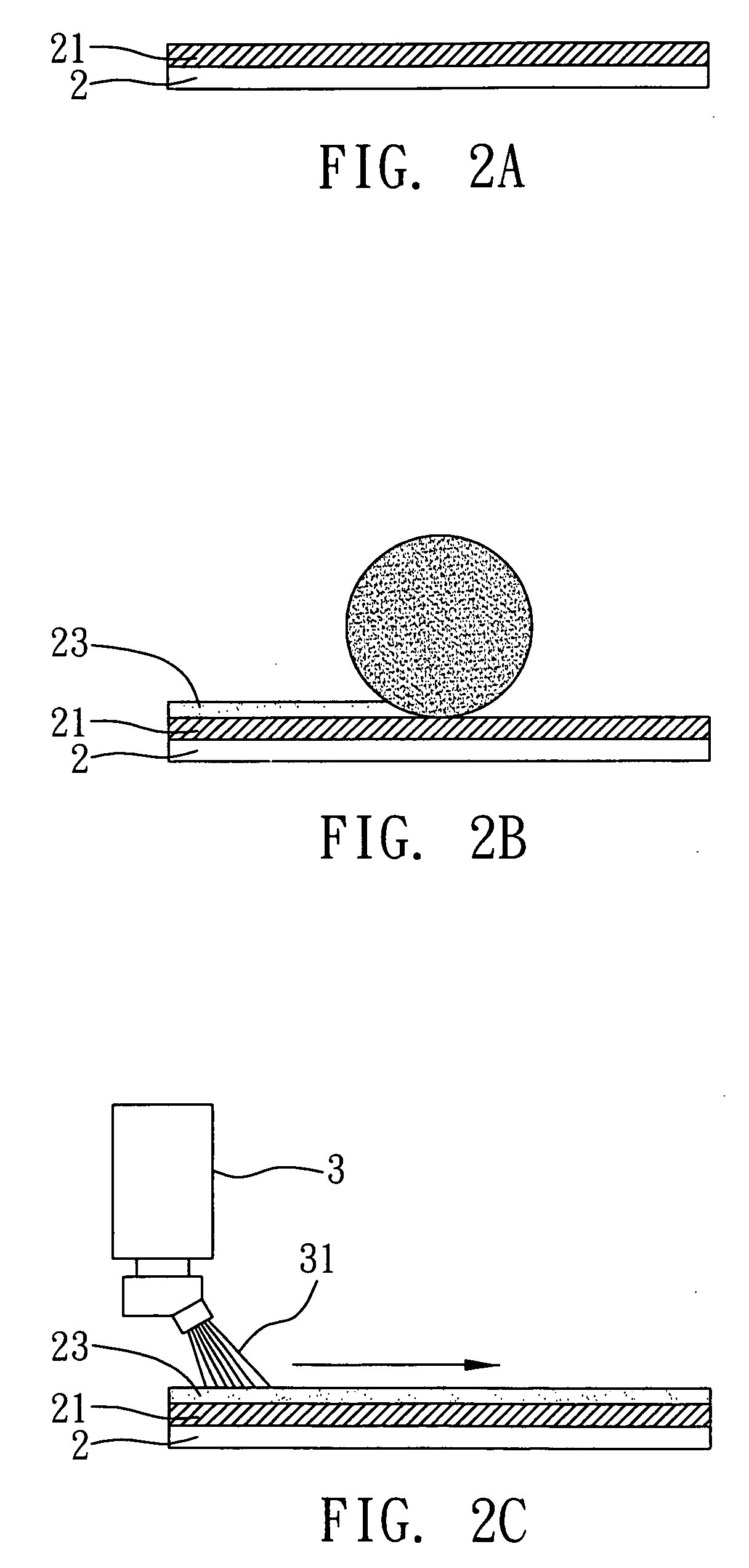Method for producing alignment layer for liquid crystal panel
a liquid crystal panel and alignment layer technology, applied in the direction of thin material processing, instruments, chemistry apparatus and processes, etc., can solve the problems of poor reliability, reduced process yield, difficult to solve the rubbing alignment technique, etc., and achieve high anchoring energy, good uniformity, and simplify the alignment process
- Summary
- Abstract
- Description
- Claims
- Application Information
AI Technical Summary
Benefits of technology
Problems solved by technology
Method used
Image
Examples
Embodiment Construction
[0026] The modes for carrying out the present invention are illustrated in the following by specific embodiments. A person skilled in the art can readily understand other advantages and effects of the present invention from the contents disclosed in this description. The present invention can also be carried out or applied by other differing embodiments. Details of this specification can be modified and altered based on different viewpoints and applications without departing from the scope of the present invention.
[0027]FIGS. 2A to 2C are views according to a preferred embodiment of the present invention. It should be noted that the appended views are simplified diagrams, and they are intended to explain the basic method of the present invention in a concise manner. Thus, only the steps that are related to the present invention are depicted in these diagrams, and the steps shown in the diagrams are not delineated to the extent needed for practical application. In fact, the process ...
PUM
| Property | Measurement | Unit |
|---|---|---|
| pressure | aaaaa | aaaaa |
| vacuum pressure | aaaaa | aaaaa |
| pressure | aaaaa | aaaaa |
Abstract
Description
Claims
Application Information
 Login to View More
Login to View More - R&D
- Intellectual Property
- Life Sciences
- Materials
- Tech Scout
- Unparalleled Data Quality
- Higher Quality Content
- 60% Fewer Hallucinations
Browse by: Latest US Patents, China's latest patents, Technical Efficacy Thesaurus, Application Domain, Technology Topic, Popular Technical Reports.
© 2025 PatSnap. All rights reserved.Legal|Privacy policy|Modern Slavery Act Transparency Statement|Sitemap|About US| Contact US: help@patsnap.com


